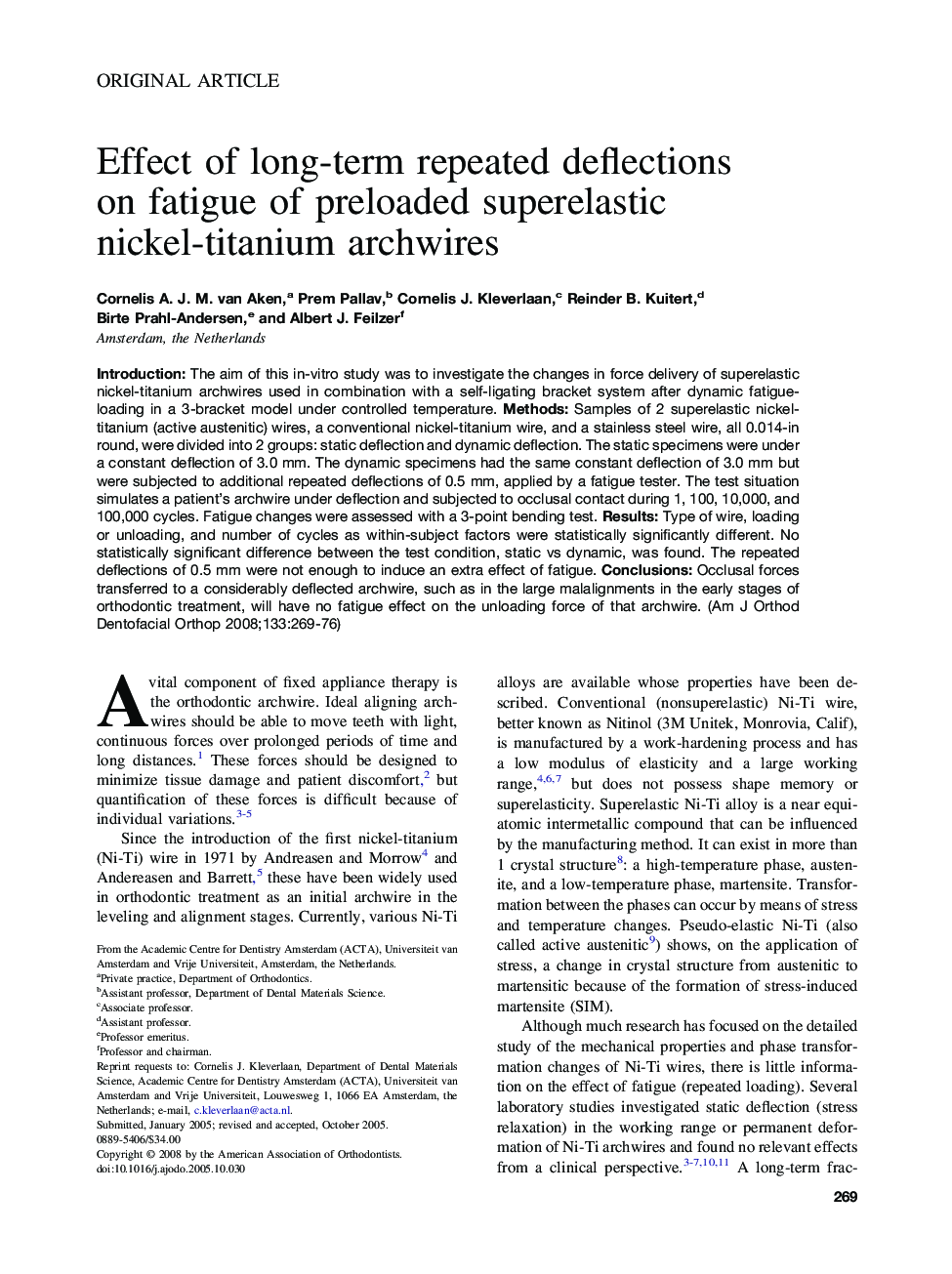| Article ID | Journal | Published Year | Pages | File Type |
|---|---|---|---|---|
| 3120366 | American Journal of Orthodontics and Dentofacial Orthopedics | 2008 | 8 Pages |
Introduction: The aim of this in-vitro study was to investigate the changes in force delivery of superelastic nickel-titanium archwires used in combination with a self-ligating bracket system after dynamic fatigue-loading in a 3-bracket model under controlled temperature. Methods: Samples of 2 superelastic nickel-titanium (active austenitic) wires, a conventional nickel-titanium wire, and a stainless steel wire, all 0.014-in round, were divided into 2 groups: static deflection and dynamic deflection. The static specimens were under a constant deflection of 3.0 mm. The dynamic specimens had the same constant deflection of 3.0 mm but were subjected to additional repeated deflections of 0.5 mm, applied by a fatigue tester. The test situation simulates a patient’s archwire under deflection and subjected to occlusal contact during 1, 100, 10,000, and 100,000 cycles. Fatigue changes were assessed with a 3-point bending test. Results: Type of wire, loading or unloading, and number of cycles as within-subject factors were statistically significantly different. No statistically significant difference between the test condition, static vs dynamic, was found. The repeated deflections of 0.5 mm were not enough to induce an extra effect of fatigue. Conclusions: Occlusal forces transferred to a considerably deflected archwire, such as in the large malalignments in the early stages of orthodontic treatment, will have no fatigue effect on the unloading force of that archwire.
